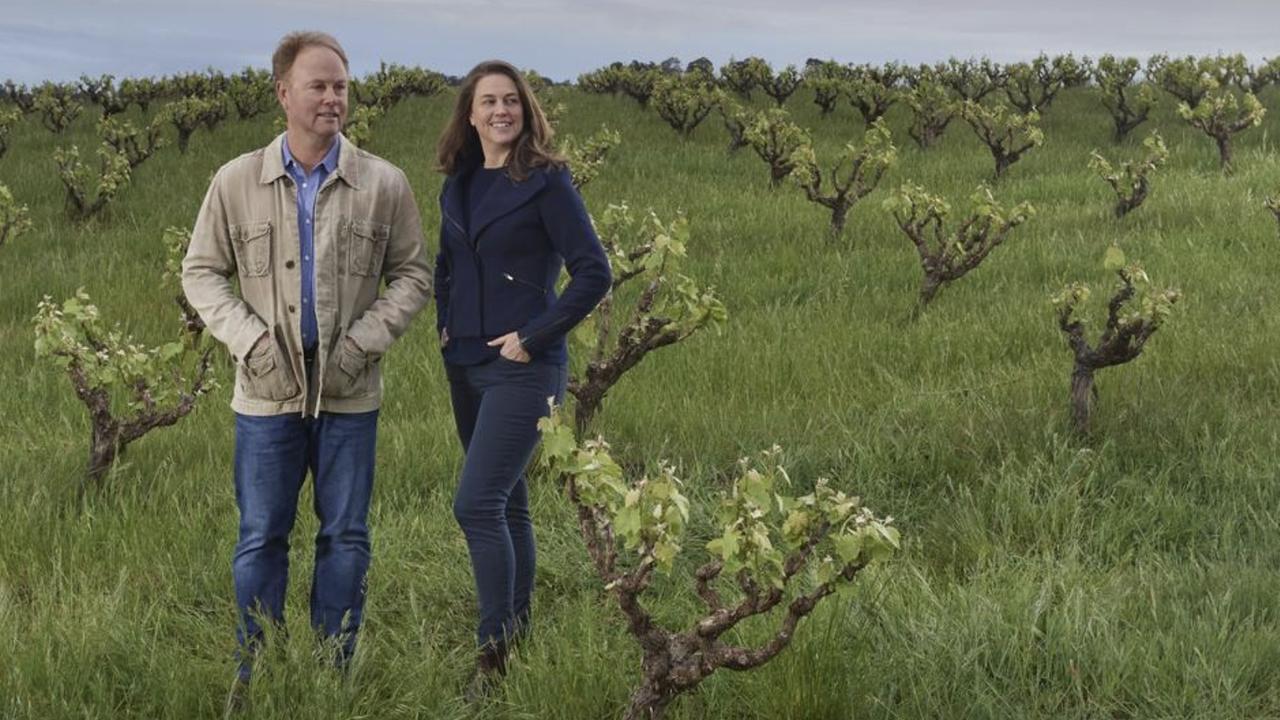Read all about it: the garden of publisher Morry Schwartz and his gallerist wife Anna
The garden of publisher Morry Schwartz and his gallerist wife Anna covers all the angles...
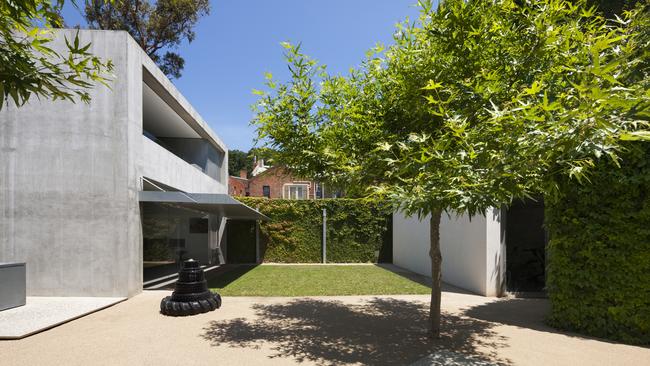
When a client commissions a garden to be a piece of art and has confidence in the designer to deliver without compromise, you know it will be something special.
Publisher Morry Schwartz bought this property in Melbourne’s Carlton in 2008 with his wife Anna, a leading gallerist. They engaged architects Denton Corker Marshall to renovate the home, a former bakehouse on a 500sqm block, and tapped Steve Calhoun of Tract Consultants to design the garden. The project, completed in 2009, won an award for residential design in 2015 from the Victorian chapter of the Australian Institute of Landscape Architects.
Calhoun was one of the earliest landscape architects in Australia and helped set up our first degree course (in 1982, at RMIT). He arrived in Melbourne from the US in 1976 for a one-year contract and “it never occurred to me to go home”, he says in his soft drawl. His impressive list of public landscape projects includes Canberra’s Parliament House and the Parliamentary Triangle; Cairns Esplanade; Melbourne’s National Tennis Centre and the MCG; and “both sides of the Yarra all the way to Port Melbourne then back to St Kilda”. That’s 22km of riverfront. The body of work is covered in his 2018 book Creating Memorable Places and Experiences ($70, manic.com.au). Calhoun’s aim is to make urban landscapes liveable, asking, “Can you imagine what cities would be like without trees?”
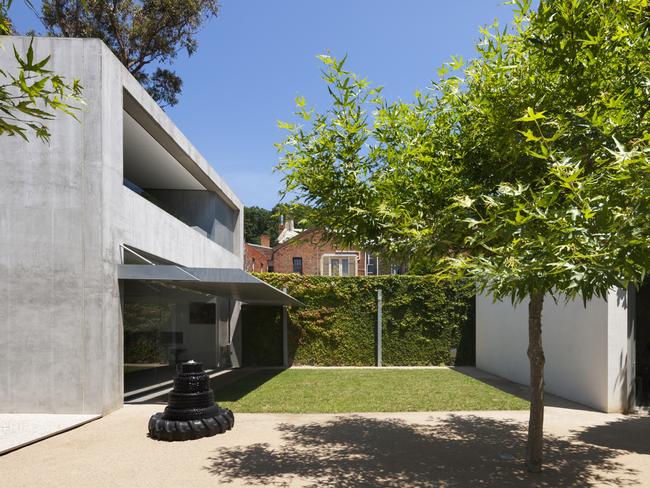
The Schwartz garden is at the other end of the size scale. The land is an unusual shape with numerous awkward angles; all the 250sqm garden is at the rear of the block, designed as an extension of the house. The brief was “to create a piece of art, on which to look and in which to live, and as a setting to display sculpture”. The functional requirements were for an outdoor projection area, an external “lounge” and an informal dining zone.
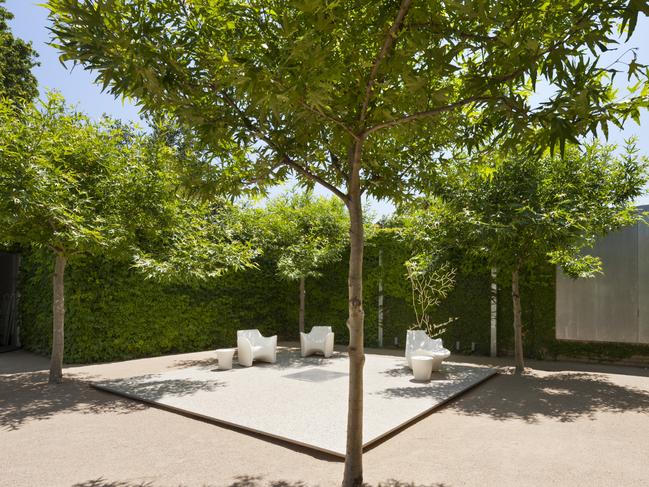
Calhoun capitalised on the zigzag shape of the boundary to create three rooms: an outdoor cinema with lawn “carpet”, a “floating” platform for congregating around a fire under a canopy of pleached plane trees, and a daily meals area that catches the northern sun, adjacent to the kitchen. The dining table sits under a wisteria-draped pergola, close to a mature Canary Island date palm that was moved into this position. The white wall used for film projections also screens a service area behind it.
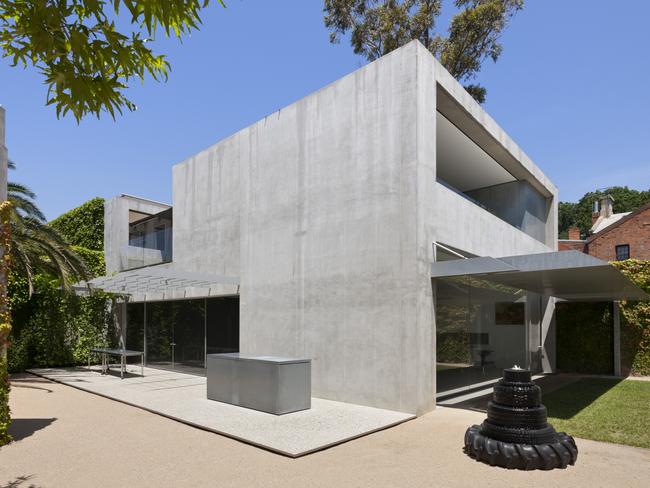
All three spaces are unified by a field of granitic gravel and “Persian carpets” on the high boundary walls, using Virginia creeper (Parthenocissus quinquefolia) for its colourful autumn foliage and creeping fig (Ficus pumila).
Like the house, the garden is sleek, bold and elegant, reflecting the owners’ taste for contemporary art and design. Although it has matured over the years (Calhoun still visits each year to supervise the tree shaping), it has not changed – evidence of a successful design.
“We are so proud of our garden,” says Schwartz. “It is a pleasure to be in, alone or with a hundred people.”
Q&A
To regenerate our vegie plots we dug through a commercial blend of two-thirds composted soil and one-third mushroom mulch. It had large lumps of lime in it. Our 60 seedlings became yellow and stunted. Testing showed the soil pH was 9. I treated it with sulfur but the seedlings are still poor. Jen Christofaro, Lake Bunga, Vic
This mix was a bad product and not fit for purpose. Lime is used to increase alkalinity, and mushroom compost can be highly alkaline. Both should be used sparingly, and only on acidic soils. A pH of 9 is almost impossible to correct, as it is 100 times more alkaline than pH 7. Sulfur is best but it works slowly, over months.
My tomato plants, throughout my garden for years, always get brown leaves and stems. The fruit is fine but the plants wither before their time. Melany James, Mt Gambier, SA
Some yellowing and browning of older leaves is normal but tomatoes are prone to many problems. It’s likely to be fusarium wilt or verticillium wilt – fungal diseases that persist in the soil for years. Once infected, plants can’t be saved. Practising crop rotation is essential. Try growing resistant varieties, add plenty of compost and organic matter before planting and give regular water, fertiliser and Seasol.
What can I plant for a bushy hedge to 1m tall in full sun that is native and has flowers? Vanessa Halter, Sydney
Try dwarf grevilleas such as ‘Pink Midget’, ‘Fireworks’, ‘Apricot Glow’ or ‘Lady O’. Syzygium ‘Little Denise’ is a dwarf lillypilly with pink new growth and pink flowers; Callistemon ‘Wilderness White’ is a good small bottlebrush.
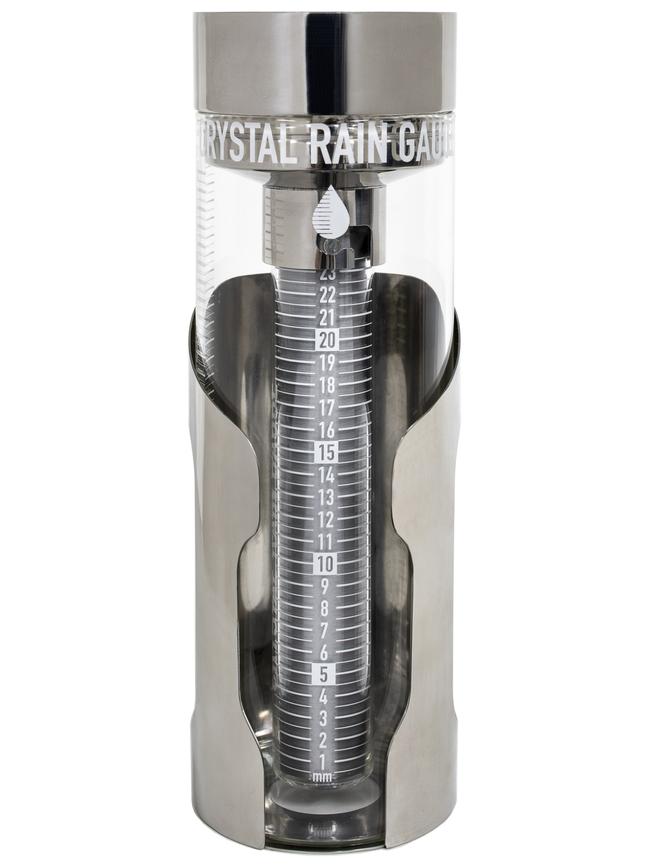
Send your questions to: helenyoungtwig@gmail.com or Helen Young, PO Box 3098, Willoughby North, NSW 2068. The best question for March wins an Australian-designed Crystal Rain Gauge of marine stainless steel and glass, worth $80.



